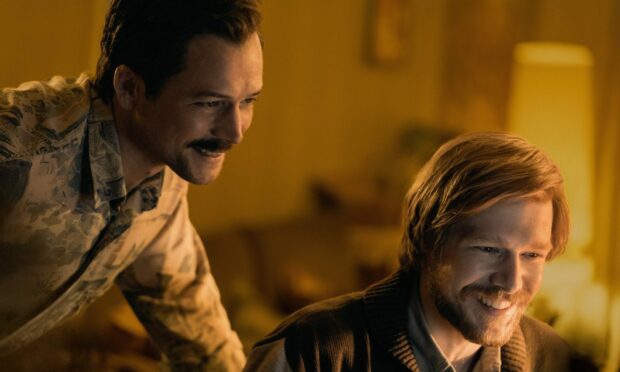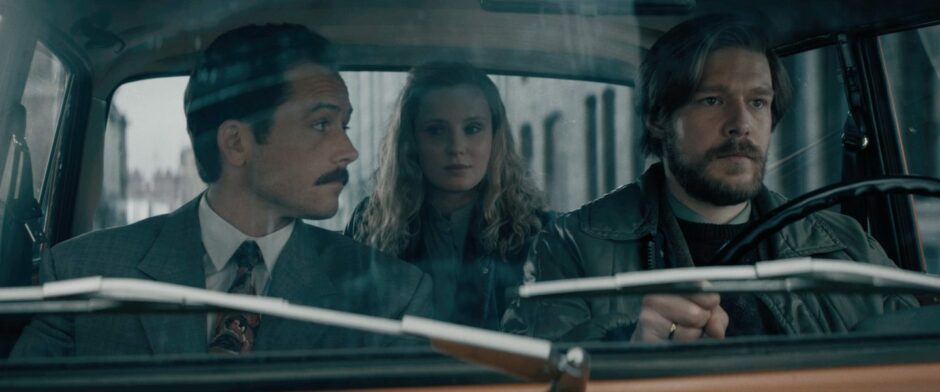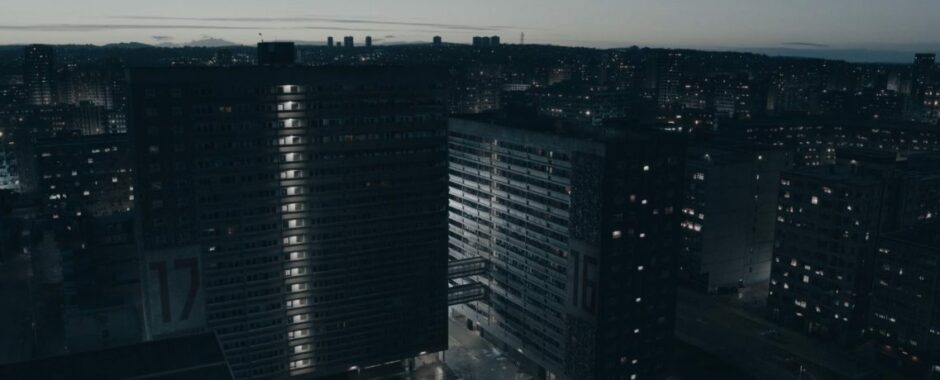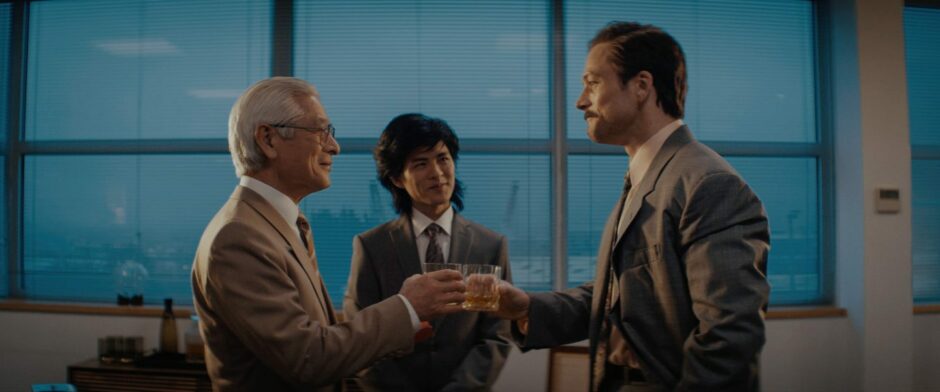Aberdeen is so rarely seen on the big screen that spotting the city locations used liberally throughout Tetris – which had its world premiere last night – adds an extra level of enjoyment to the energetic corporate thriller.
At its most basic (and boring), Tetris is a movie about the tense contract negotiations that helped bring the legendary videogame to the world – but in the hands of Peterhead-born director Jon S Baird, it becomes a vibrant, visually interesting origin story that can be enjoyed by gamers or non-gamers alike.
With some ‘look-at-me’ stylistic flourishes (that recall Baird mentor Martin Scorsese’s work in Goodfellas and Casino) the film gets off to a brisk start as we’re introduced to the main players in this game of boardroom intrigue that stretches from Seattle to across the Iron Curtain.
Make sure you’re concentrating during the frenetic first 15 minutes, which explain the backstory of how a weird little puzzle game that was developed by Russian game designer Alexey Pajitnov (played by Nikita Efremov) found itself at the centre of an international rights battle.
The film’s hero, if you can call him that, is video game developer Henk Rogers (Taron Egerton), who was one of the first to see the potential of the game and was desperate the secure the rights for international gamers.
Those rights – which come with a number of strings attached, most notably murky Communist bureaucracy and KGB corruption – are soon at the centre of a bitter fight between rival software salesman Robert Stein (Toby Jones), games giant Nintendo and even the disgraced UK publisher Robert Maxwell (Roger Allam, under a mountain of prosthetics).
Tetris is enjoyable for gamers and non-gamers
For anyone not steeped in the history of video games, Tetris does a good job of bringing casual viewers up to speed.
Baird structures the film around game levels and displays them with blocky 8-bit computer graphics that will be familiar to anyone who bashed the buttons of consoles back in the 1980s.
A car chase towards the end definitely feels like a moment where the film-makers have strayed from the facts and taken some creative licence, but they get away with it because Baird makes a bold creative choice – which I won’t spoil – that leans into the improbability of the sequence and put a big grin on my face with its sheer audacity.
Taron Egerton and Nikita Efremov are both excellent as kindred spirits who find each other in spite of the Iron Curtain and whose relationship, quite sweetly, continues to this day.
How does Aberdeen look?
Putting aside from the slight shame that Tetris’ location managers actually thought that the Granite City looks the spit of Communist-era USSR, there’s plenty of Aberdeen in the finished cut.
Since the only shots we’ve seen up until now have been on-set photographs, viewers might be surprised to see how many of the locations have been augmented with CGI so the city we see is recognisably Aberdeen but with drab Moscow landscapes in the background.
Residents of Seamount Court on the Gallowgate will be pleased to see how many of its exteriors and interiors feature in the finished film, in particular, a tense sequence when some KGB goons intimidate Alexey’s children.
One of the biggest ‘is-that-really-Aberdeen?’ transformations comes in Gerrard Street, which has been transformed into a bleak residential block where Alexey discovers the very real risks associated with his burgeoning bromance with Henk.
Not everywhere in Aberdeen has been used to look like the USSR. The old Halliburton building in Dyce gets the honour of becoming Nintendo’s Japanese HQ as Henk tries to convince the company’s president, Hiroshi Yamauchi, that Tetris is a blockbuster in the making.
The origin story of Tetris
If you’re a gamer who fondly remembers when the Gameboy was released and packaged with Tetris in 1989, this origin story of the game is full of enough twists and turns – some true, some implausible – to keep you entertained.
And if you’ve never picked up the game in your life and you’re just keen to see how Aberdeen looks on film, there’s more than enough of the Granite City in the finished movie to make it worth your time.
After the heartwarming biopic Stan & Ollie and the darkly comic political scandal Stonehouse, Jon S Baird is fast becoming a master at turning real-life events into compelling, entertaining drama.
It would have been easy to make the origin story of Tetris into a drama as drab and dreary as Communist-era USSR, but Baird has flexed his directorial muscles to such an extent that this story is as bright and colourful as the tumbling blocks themselves.
Tetris will screen on Apple TV+ from March 31
You might also like…
- First look: Check out new BBC series that will put spotlight on Highland Cops
- Design guru Banjo Beale will be Designing The Hebrides in a new BBC series




Conversation